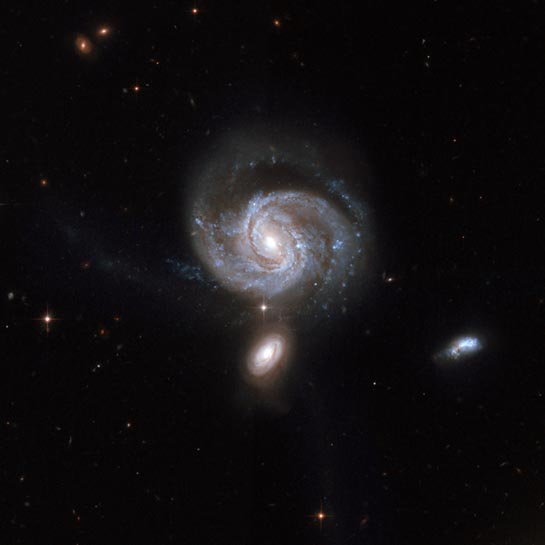
Interacting Galaxies
RA 23h 27m 56.88s Dec 08° 46' 46.49"
Pegasus
350 million light-years (100 million parsecs)
13.0
1.1 by 1.0? arcmin
June 9, 2002
33 minutes
F435W (B) and F814W (I)
NASA, ESA, the Hubble Heritage (STScI/AURA)-ESA/Hubble Collaboration, and A. Evans (U of Virginia, Charlottesville/NRAO/Stony Brook University)
April 24, 2008
ABOUT THIS IMAGE:
NGC 7674 (seen just above the center), also known as Markarian 533, is the brightest and largest member of the so-called Hickson 96 compact group of galaxies, consisting of four galaxies. This stunning Hubble image shows a spiral galaxy nearly face-on. The central bar-shaped structure is made up of stars. The shape of NGC 7674, including the long narrow streamers seen to the left of and below the galaxy can be accounted for by tidal interactions with its companions. NGC 7674 has a powerful active nucleus of the kind known as a type 2 Seyfert that is perhaps fed by gas drawn into the center through the interactions with the companions. NGC 7674 falls into the family of luminous infrared galaxies and is featured in Arp's Atlas of Peculiar Galaxies as number 182. It is located in the constellation of Pegasus, the Winged Horse, about 400 million light-years away from Earth. NGC 7674 was discovered on August 16, 1830 by John Herschel.
This
image is part of a large collection of 59 images of merging galaxies taken
by the Hubble Space Telescope and released on the occasion of its 18th
anniversary on 24th April 2008.